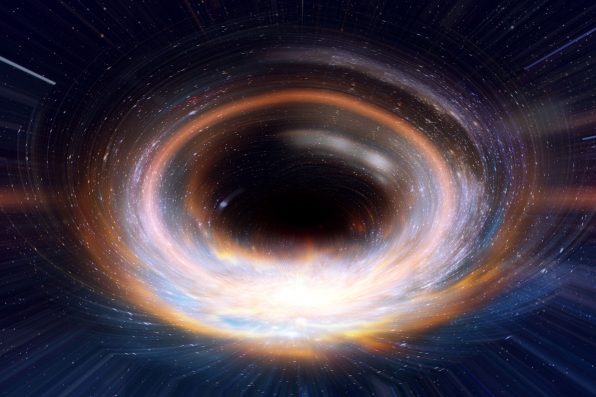The Hungriest Black Hole In The Early Universe Is Defying Laws Of Physics, Devouring Matter 40 Times Quicker Than Scientists Believed Was Possible

When astronomers used the James Webb Space Telescope (JWST) to get a closer look at ancient galaxies, they found a supermassive black hole that was breaking the rules of physics by gobbling up matter at a rate more than 40 times what scientists thought possible.
The black hole is named LID-568 and was in action when the universe was just 1.5 billion years old. To put that into perspective, the universe is now about 13.8 billion years old.
The discovery could provide insight into why some monstrous black holes seem to be growing too big and too fast for current cosmological models to explain.
Black holes have what’s called an Eddington limit, which determines how quickly they can devour matter before they become unstable.
The newly discovered black hole is going way beyond its limit by consuming matter at 40 times the expected rate. It has been dubbed the hungriest black hole in the early universe.
“This black hole is having a feast,” said Julia Scharwächter, a co-author of the study and an astronomer with the International Gemini Observatory and the National Science Foundation’s NOIRLab.
“This extreme case shows that a fast-feeding mechanism above the Eddington limit is one of the possible explanations for why we see these very heavy black holes so early in the universe.”
The research team, led by astronomer Hyewon Suh, identified LID-568 through X-ray observations, which showed that it was abnormally bright. The black hole was invisible in regular light, so JWST’s infrared vision was needed to observe it.
“Owing to its faint nature, the detection of LID-568 would be impossible without JWST. Using the integral field spectrograph was innovative and necessary for getting our observation,” said Emanuele Farina, a study co-author.

Quality Stock Arts – stock.adobe.com – illustrative purposes only – pictured above is a black hole
The observations revealed outflows of gas surrounding the black hole unlike anything ever seen before.
The power, speed, and size of these outflows suggested that much of the black hole’s growth may have occurred during a single black hole feeding episode.
Instead of growing steadily over time, it had a sort of cosmic growth spurt, gaining most of its mass in one big binge.
It has a mass of around 7.2 million solar masses. Perhaps all unexplainably large black holes undergo phases of super-Eddington activity to enable faster growth.
Overall, the discovery shows that black holes are capable of exceeding their Eddington limits and marks another breakthrough in scientific understanding of the early universe.
The research team plans to use JWST to conduct further investigations to learn more about how the supermassive black hole can maintain such a rapid feeding rate without becoming unstable.
Hopefully, their findings will help solve the mystery of how the largest black holes in the universe came to exist.
The details of the study were published in the journal Nature Astronomy.
Sign up for Chip Chick’s newsletter and get stories like this delivered to your inbox.
More About:News





